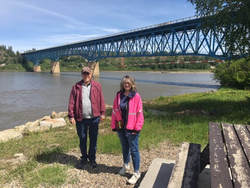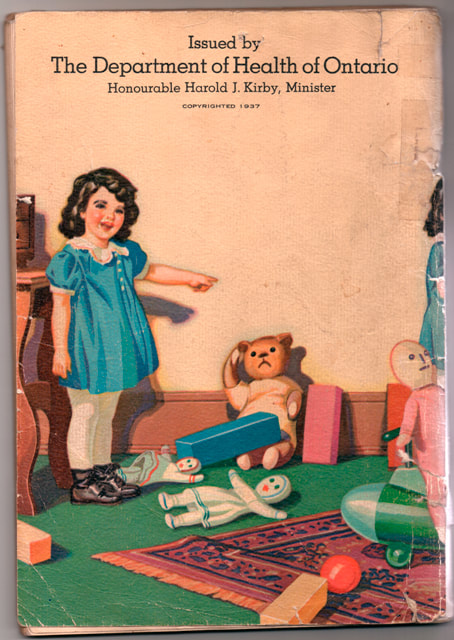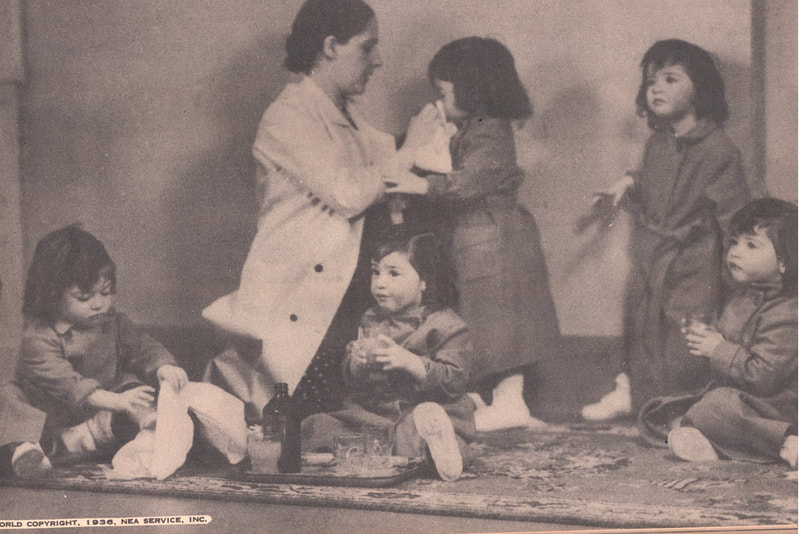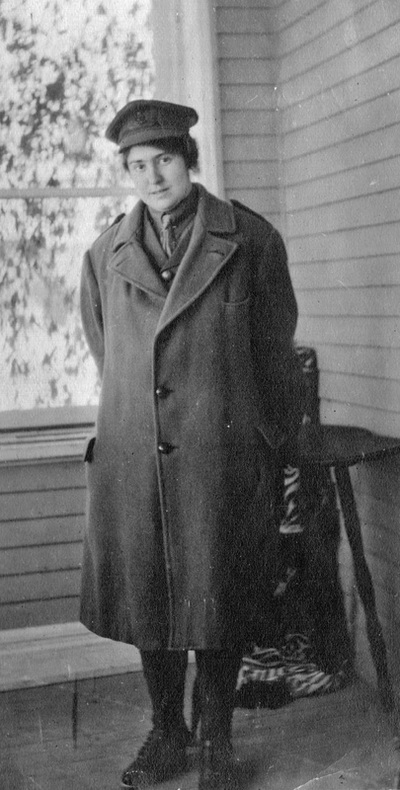|
Recently I came across a 1937 booklet issued by the Department of Health Ontario titled The Baby. While very much of its time, babies apparently haven't changed all that much, and it would be quite suitable for today's uberparents to follow. The differences relate more to modern inventions such as monitors, new fabrics, disposable diapers, blenders etc. There's a whole feminist thesis there, but right now I'm thinking about the photographed and painted images used to illustrate proper child rearing of the day. They feature the famous Dionne Quintuplets, a tourist attraction near North Bay, where these five little girls' care was taken over by the province so that they could be raised in a healthy and happy environment while also on daily display in a zoo-like atmosphere. The dramatic story began with the first recorded birth of five babies. After four months with their family, custody was signed over to the Red Cross who paid for their care and oversaw the building of a hospital for the sisters. Less than a year after this agreement was signed, the Ontario Government stepped in and passed the Dionne Quintuplets' Guardianship Act, 1935 which made them Wards of the Crown until the age of 18.[1] The Ontario provincial government and those around them began to profit by making them a significant tourist attraction. https://en.wikipedia.org/wiki/Dionne_quintuplets So these beautiful little girls are shown attended by their nurses as they play happily, have their lunch, even get their cod liver oil. (Mandatory for a child growing up in Northern Ontario, cod liver oil has me hating fish to this day.) After being in the spotlight, even media darlings if you will, they were returned to an abusive relationship with their parents, who had had several more children. There is a great deal written by and about the women over the years, but they are generally forgotten these days.
The high irony of using them as examples for a Spock style baby book keeps on giving. It speaks of bureaucratic overload, well-intentioned meddling, exploitation and greed not only on the part of the family but also the government. As a window in time, it also reveals the ways that baby care has and hasn't changed over the decades.
1 Comment
This seems to be the time of year that I consistently move into painting mode. The sun is wonderful but still angled too much to make effective solar prints, and then there are some new paints I got for Christmas. Most riveting is my immersion into the inspiring book Ninth Street Women by Mary Gabriel. It chronicles the lives of many of the artists in the New York School, focusing on Lee Krasner, Elaine de Kooning, Helen Frankenthaler, Joan Mitchel and Grace Hartigan. The combination of personal stories and sacrifice, plus insights into the rivalries, connections and community that existed in the Village in New York through the 30s and 40s makes for a lively read. The historical background and rationales for New York becoming the cultural and intellectual centre are laid out and meticulously documented. It brings home to me that in our small local way the artist community has to be nourished with ideas beyond marketing strategy and how-to workshops.
At a practical level my accumulation of painted artworks is mitigated because I have decided to work on sturdy rag paper rather than canvas. It stores in a flat pile under my table. There is no defined theme or intent, which probably connects to the 19C expression "stupid as a painter" and also to my need to check back in on some basics.  On Sunday (or was it Saturday? I forget already) we visit Taylor Flats to see the Peace River up close. This is where we talk to the woman at the tourist cabin who tells us how much they loved Doc Kearney. She has lived her entire life in the area and has seen the river get progressively more shallow as the dams are built. She claims that the Bennett one doesn't always use all of its turbines but still the government builds more dams. Definitely an anti Site C campaigner. And I think she tells us that as a child she delivered lunches to the workers building the big bridge across the river there, but this may be false memory. This place also has a copy of Alexander Mackenzie's canoe that he and a small crew used to explore the Peace - just unfathomable in today's world. I have been invited to visit a seniors' apartment for the Senior Storytelling Project. My travelling companions decline, but I think that I might be able to glean more oral narratives about Doc Kearney and so I drop in for an hour. My timing is off, since I might have had more connections a decade ago. Other than the fact that their kids and grandkids went to Kearney Middle School there aren't any memories of the Doc within this group. I compare this to the public school my kids went to in Oshawa which was named after a doctor as well, and none of us have any idea who he was. It starts as an interesting community effort with cookies and kidding around. One woman has written her story and this is being compiled by a volunteer, but she doesn't want to read it, and a discussion about private and public ensues. She may not have understood that they were trying to create a record of North Peace stories and lives. Clearly no one really wants to share deep dramas. So I, the intruder, suggests that maybe just telling about your school, how did you get there, who were your teachers, and so on might start off a conversation. A tiny quiet women speaks. Quite articulately, she tells us that she has absolutely no education. She grew up in northern Alberta in a family of boys. Her mother was ill so she had to stay home to look after her, then when she died she had to look after the house while her brothers (perhaps 5) went to school. At fourteen her father wanted her to enroll and catch up but she didn't want to be with six year olds. Eventually she left home and made her own way. She worked in housekeeping jobs; she said that someone had to show her how to sign her name on her first paycheque. She married, moved to Dawson Creek and then Fort St. John. Her jobs were in cafeterias and then in the preemie section of the hospital. She spoke in wonder about a particular baby who was about as small as her hand. Needless to say we were captivated, leaning toward her to catch every detail of her story. It seemed impolite to ask her whether she did ever learn to read but I am sure it was on everyone's mind. Our society has such a stigma about literacy and the reticence in just asking her was an underlining moment for me. My time is up so I don't know whether other members of the group started to speak up. The business of short travel is like airdrop - a pop in that can't ever fully satisfy. Perhaps that will be the subject of my next blog.  So Saturday arrives and I am to give a talk in the afternoon. Heather the museum curator mentions that this is a new thing for them since most of their talks are about dead people. Also she was hoping that members of city council might attend but they are all away in Halifax for a conference. As both artist and curator I am quite familiar with fluctuating numbers for openings and talks -- veering between 75 and zero, so I have no idea what to expect, but as we drive up we are greeted by music, balloons and banners in the park adjacent to the museum. Alas it's not for me; it's the PRIDE festival taking place across the way. My event, while prominently advertised in the street signage out front, turns out to be a small party bolstered by Heather, my family members, some museum researchers, a couple interested in the solar printing process in particular, the Doctor Kearney Middle School principal Wes, and Matt from the Alaska Highway News. Intimate. That said, everyone there seemed keenly engaged in the subject and offered much in terms of feedback, more info on the Doc and the region in general. I do a PowerPoint talk showing some of the original photographs and explain how I create the prints. There is a lot of interest is a drawing that an American soldier did of my father, since Tamara, a museum research volunteer, is looking for material on William Barnett, an artist who was there on the Alaska Highway project in the 1940s. We email my sister and yes Bill Barnett was a friend of my mother's at the time so he likely did the drawing.  Tamara retrieves a book from the archives that lists all of the babies delivered by Garnet during his career there. Katie finds my name, and we note that the date is a day earlier than the one on my birth certificate. In my album there is a birth announcement card that has the same date as the book, but it has been inked out and corrected. Back in Toronto I ask my sister about this and she suggests that my father had a particular printer in Sarnia so maybe the three hour time difference is the reason. If I was born around midnight and the telegram to Ontario came somewhere then ?? There isn't any way to find this out. Which brings me to another subject, that of memory. I have been listening to Malcolm Gladwell's excellent podcast Revisionist History, (thank you Anna) and the one I heard today is Free Brian Williams. It concerns memory, and a study that examines the way we all remember significant events and how these memories drift over time, varying often dramatically from person to person and gaining embellishment as they are retold. I am sure that my Fort St. John adventure will work its way into various pockets of my brain and will not always be remembered as clearly as it supposedly is now. Maybe I will conflate the PRIDE festival with my talk, or suggest that we went horseback riding at Wes's ranch. So that's why I write this. Road TripA fabulous surprise, well, near-surprise, was the arrival on Friday of daughter Katie who flew up from Vancouver for the weekend. Now a threesome, we headed off to Hudson's Hope and the W.A.C. Bennett Dam.  Uncle Garnet took me there by bus back in 1964 when it was under construction--I recall seeing the ant-like trucks way below as they hauled dirt into what became an enormous earth dam. This time we were bused 500 feet underground to view the turbines and get a sense of the history and magnitude of the project. We are given information on how turbines work as well as an overview of the BC power grid and the immensity of impact this dam and its companion the Peace River dam has. Also some of the geological history in the area and the fact that dinosaurs were once there. There is a brief mention of the displacement of mostly Aboriginal people when the giant lake was created. The current public issue is the latest dam project, Site C, a hot button topic that seems to out shine the pipeline controversies swirling throughout the province. http://www.dawsoncreekmirror.ca/regional-news/site-c/bc-hydro-acknowledges-w-a-c-bennett-dam-s-dark-side-1.2275956 https://en.wikipedia.org/wiki/W._A._C._Bennett_Dam The excursion was a good break from installation work and the artist talk tomorrow afternoon.
Fort St. John May 29
We arrive around 9 pm. It’s light. Awake 5 ish perhaps 4:30. It’s light out. Basically I did not see the city after dark. We are far enough north for this. I am here along with my trusty assistant (husband Richard) to mount an exhibition of solar prints at the museum about my uncle Dr. Kearney. He was a beloved doc, the second one in the area and famous for his many acts of generosity plus performing an operation remotely by radio (the man survived) and modifying his Model T into the town’s first ambulance. He delivered me, along with most of those born between 1935 and 1960. So while the trip is an art/heritage project it’s also a chance for me to revisit this place. My parents returned to Ontario while I was still a baby and I visited here once when I was 18, getting to know my uncle a little. In those days it was CNR to Edmonton, Northern Alberta Railway to Dawson Creek and a bus to FSJ. Nowadays there’s a bustling airport with regular flights to Calgary and Vancouver. I was hoping to run across a few people with memories/relatives/connections that I could chronicle but I am probably a decade or so too late. The exhibit takes several days to install in this museum setting, surrounded by artifacts that chronicle North Peace history. My work tells about my uncle through my art practice, making solar prints of early family photos on family linens. My first view of the museum confirms to me that this is the ideal setting for this body of work. The main museum building contains a series of set pieces that reproduce aspects of fsj history from teepee, through trappers cabin, doctor’s office, hospital room, school, post office, even a section that demonstrates the great WW2 Alaska Highway project. I am scratching the surface here. There’s also a reconstructed version of Ma Murray’s Alaska Highway News, miraculously still in print with excellent coverage of my installation I must say. In digression, my sister says that it was Ma Murray who stopped and told her of my birth. The museum has several buildings outside of the main one that have been moved on site. They include, among others, early police barracks, a homesteaders' house, a fur trading cabin. As I walk out after a day’s work I am struck by the first one because I have a photograph of it in my trove of family pictures with a woman posed in front of it. She is Monica Storrs, an Anglican missionary who was a family friend. She apparently built her “abbey” herself, and often housed youngsters so that they could attend school. While in my mind I am revisiting an earlier Fort St John, the modern one is a busy world where truck and workboots replace Miss Storrs' horse. The suite hotel we are staying in is mostly populated with workers who leave in the early morning after a more generous breakfast offering than hotels usually provide, and return tired and dusty at the end of the day. On the weekend there are women and children visiting Dad or picking him up. It's very quiet although there is a guy above us that wrestles with his pitbull when he gets home from work. The first time we heard it we thought that there was a brawl or at least serious renovations but it turned out to be doggy joy, only lasting for about 15 minutes before they tumble down the back stairs and out for a run. We are told that there is a park at Taylor Flats, a few miles south of FSJ, so we take a little trip down the Alaska Highway. We chat with an elderly woman at the tourist centre who tells us that Doc was her family doctor, delivering most of the family children, with one even given the middle name Kearney. "We were all so poor, and he would take anything in payment" vegetables, the proverbial chicken etc. He charged $2 a visit throughout his career but treated people whether they paid or not. to be continued .. Now that the Legacies exhibition is up at RMG my attention is turning back toward my own artmaking and catching the few remaining fall days with sunshine strong enough to make one or two more solar prints for my Summer 2018 exhibition Solar Prints of Doctor Kearney, Fort St. John North Peace Museum, Fort St. John, B.C. Garnet Kearney was my uncle, and a famous character in the Peace River district.I am lucky to have the photos that he sent back to Ontario to his sister Marion, and have been trading with the museum archives to produce this work. After his time in WWI he went west permanently, sending pictures and letters describing his life.
I find it interesting that it is a solar project which requires endless experimentation and tinkering, something that I think is a family trait and that he might have liked as well. The idea of doing these prints on linens comes from another inheritance, a bag of embroidered hankies, towels, napkins etc., some of which would have come from their home in Renfrew Ontario and may have actually been used by Garnet at one time. This original cache of material has since been supplemented by the inherited linens of various friends and relatives. I am thinking about the juxtaposition of Victorian finery and the frontier life that Garnet went on to live and wondering whether he consciously rejected small town gentility in the east in favour of the rugged and exciting world of northern B.C. At present I am experimenting with solar developing, creating negatives then printing on various materials. It has been a lengthy learning curve and I have learned that more isn't better in terms of time in the developer, that our hard water makes it very difficult to wash out the undeveloped dye, and that Borax helps with that (thank you Sally). Also high contrast negatives are imperative.
I was introduced to the dyes through a studio visit to Cris Winter in Saranac Lake NY, where she was making botanical prints on fabric for her work. This process hasn't really taken off in Canada and so I have to bite the bullet and pay the exchange and shipping for what are actually low-priced materials -- if you live in California - One lucky break was a store in North Vancouver selling them off and my Katie just happening to be travelling home to Ontario at the time. So my stockpile is OK for now. My subject is an exploration of pre and early 20C family photographs that offer socio-historical windows into those times. We are often made to feel guilty about reading various newspapers magazines and other print media on line for free rather than buying a copy or continuing home delivery, thereby contributing to the demise of print media.
Well In my community the main local paper is mostly an organ for advertising, and wholly a component of an enormous media empire, while the locally owned dailies are long gone. Loyalties aside, it has occurred to me that our very large internet and cable bills are actually how we purchase media these days. So - shouldn't the cable companies pay royalties to those newspapers etc that one can access through their stream? And then reporters and journalists in print and other media can receive their fair share of revenue from their work from all of us by way of our internet providers. The great linguistic professor Noam Chomsky reminds us that we replace awareness of larger societal issues with sports fandom to our detriment.
Quoting TV critic John Doyle in yesterday's Globe: "A city gripped by a postseason run by its favourite team is a happier place and there’s a purity in the emotional attachment of the fans. It is a truly shared experience, something that is rare in a fragmented society, and only the dullest heart would be unmoved by it." GO JAYS GO !!! |
Archives
February 2024
|
Margaret Rodgers | Canada














 RSS Feed
RSS Feed